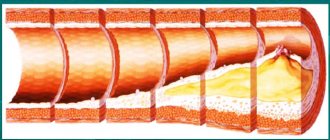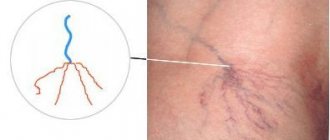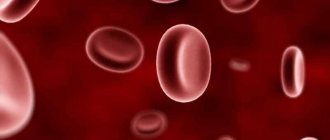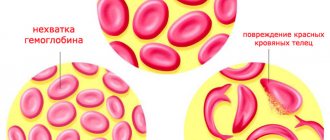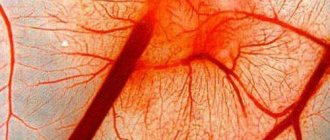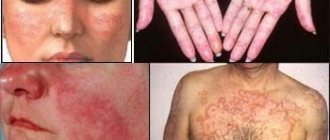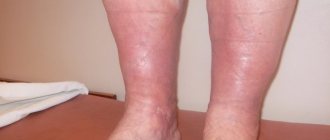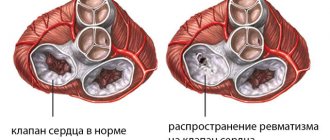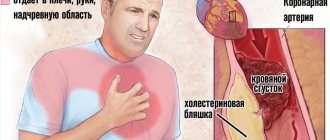Erythremia is a type of blood disease that is characterized by proliferation (growth) of red blood cells and a noticeable increase in the number of other cells (leukocytes, platelets). It is a chronic, often benign, disease that is quite rare. However, it is possible for benign leukemia to transform into malignant.
Erythremia is a disease that affects about 4 out of 100 million people per year. It does not depend on gender, but is usually diagnosed in older and older people. Although cases of the disease have been reported at younger ages, they are often women.
Erythremia (ICD-10 code - C94.1) has a chronic course.
Blood cells and disease mechanism
The mechanism of erythremia develops as follows.
Erythrocytes are red blood cells, the main function of which is to transport oxygen to all cells of our body. They are produced in the bone marrow, spleen and liver. Bone marrow is found in long bones, vertebrae, ribs, skull bones and sternum. 96% of red blood cells are filled with hemoglobin, which performs the respiratory function. Iron gives them their red tint. Red blood cells are formed using a stem cell. Their distinctive ability is the ability to divide (reproduce), transforming into any other cell.
The bones also contain yellow bone marrow, which is represented by adipose tissue. It begins to produce blood elements only in extreme conditions, when other sources of hematopoiesis do not perform their functions.
Erythremia (ICD-10 is the international classification of diseases, in which this disease is assigned code C 94.1) is a disease whose pathogenesis has not yet been studied. For reasons that are still not fully understood by doctors, the body begins to intensively produce red blood cells, which no longer fit in the bloodstream, blood viscosity increases, and blood clots begin to form. Over time, hypoxia (oxygen starvation) increases. The cells do not receive proper nutrition, and a failure occurs in the general system of the body.
Types of pathology
According to the international classification (ICD-10), the disease belongs to the group of leukemia. There are 2 forms:
- acute or erythroleukemia (code C94.0);
- chronic (code C94.1).
Taking into account the occurrence and development of blood pathology, erythremia is divided into:
- true - actually determines the disease with an increase in red blood cell mass, very rarely found in children;
- relative (false) - occurs when the number of red blood cells is normal, but there is a significant decrease in plasma volume when the body loses fluid.
This is what the patient's sclera looks like
According to the pathogenesis of real (true) polycythemia, there are:
- primary - associated with impaired development of the myelocyte cell;
- secondary - possible as a reaction to a lack of oxygen due to lung diseases, rising to altitude, smoking; or is a consequence of increased synthesis of the hormone erythropoietin by the kidneys in tumors, hydronephrosis, cystic changes, neoplasms of the cerebellum, uterus.
In childhood, relative erythrocytosis is observed with diarrhea, vomiting, and severe burns. Secondary erythremia is associated with congenital heart defects (tetralogy of Fallot), rheumatic defects (mitral stenosis), severe bronchitis, tumors of the pituitary gland and kidneys.
Some interesting facts about erythremia
- Erythremia is the most benign disease of all leukemias. That is, it behaves passively for a long time and leads to complications quite late.
- It can be asymptomatic and not appear for many years.
- Despite elevated platelet levels, patients are prone to heavy bleeding.
- Erythremia has a family predisposition, therefore, if there is a patient in the family, the risk of its occurrence in one of the relatives increases.
Genetic predisposition
It is currently unknown which gene mutations cause the appearance of erythremia, but it has been established that in families the disease often recurs in subsequent generations. The likelihood of developing the disease increases significantly if a person suffers from:
- Down syndrome (impaired shape of the face and neck, developmental delay);
- Klinefelter syndrome (disproportionate figure and possible developmental delay);
- Bloom's syndrome (short stature, pigmentation on the face and its disproportionate development, predisposition to cancer);
- Marfan syndrome (disorders of connective tissue development).
The predisposition to erythremia is explained by the fact that the genetic cellular apparatus (including the blood apparatus) is unstable, so a person becomes susceptible to external negative influences - toxins, radiation.
Toxic substances
When they enter the body, they can cause mutation of genetic cells. These substances are called chemical mutagens. After numerous studies, scientists found that patients with erythremia were in contact with these substances before developing the disease. Such substances include:
- benzene (found in gasoline and many chemical solvents);
- antibacterial drugs (in particular, Levomycetin);
- cytostatic drugs (antitumor).
Symptomatic therapy
In all stages of the disease, it is necessary to prevent severe consequences. Remedies that eliminate specific symptoms are needed.
- For high blood pressure, antihypertensive drugs are used.
- Skin itching is relieved with antihistamines.
- When anemia increases, donor blood and washed red blood cells are transfused.
- Ulcers of the stomach and intestines are treated with Almagel, Omeprazole.
- The development of heart failure requires the use of glycosides.
Patients with erythremia are registered at the dispensary and are examined annually by a gastroenterologist, neurologist, and rheumatologist. Consult and observe a hematologist.
Stages of erythremia and their symptoms
Erythremia has the following stages: initial, advanced and terminal. Each of them has its own symptoms. The initial stage can last for decades without causing any serious symptoms. Patients usually attribute minor symptoms to other, less serious diseases. After all, even doctors often do not pay due attention to imperfect blood tests.
If initial erythremia occurs, blood tests are moderately abnormal.
The initial stage is also characterized by rapid fatigue, dizziness, and tinnitus. The patient sleeps poorly, feels cold in the extremities, and swelling of the arms and legs appears. There is a decrease in mental performance. There are no external manifestations of the disease yet. Headache is not considered a specific sign of the disease, but it occurs at the initial stage due to poor blood circulation in the brain. For the same reason, vision, attention and intelligence decrease.
When diagnosed with erythremia, the symptoms of the disease at the second stage have their own characteristics - the gums bleed, small hematomas become noticeable. Dark spots (symptoms of thrombosis) and even trophic ulcers may appear on the lower leg. The organs in which red blood cells are formed—the spleen and liver—enlarge. Due to the development of the disease, the lymph nodes swell.
The second stage of erythremia can last about 10 years. Weight is noticeably reduced. The skin takes on a cherry tone (usually the arms and legs), the soft palate changes color, and the hard palate retains its previous shade. The patient is bothered by itchy skin, which intensifies after swimming in warm or hot water. Swollen veins from excess blood become noticeable on the body, especially in the neck area. The eyes seem to be bloodshot, because erythremia, the symptoms of which are quite obvious in the second stage, promotes blood flow to the vessels of the eyes.
Due to poor blood circulation in the capillaries, pain and burning sensations appear in the fingers and toes. In advanced cases, cyatonic spots on them become noticeable.
There are bone and epigastric pains. Gouty joint pain is associated with excess uric acid. In general, kidney function is impaired, pyelonephritis is often diagnosed and urate stones are found in the kidneys.
The nervous system suffers. The patient is nervous, his mood is unstable, tearful and changes frequently.
Blood viscosity increases, which entails the appearance of blood clots in a variety of vascular areas. There is also a risk of developing varicose veins.
Attention! Patients may also suffer from hypertension and the opening of ulcers in the duodenum. This is due to a decrease in the body's defenses and an increase in the number of Helicobacter pylori - it is this bacterium that causes ulcers.
The third stage of erythremia is characterized by pale skin, frequent fainting, weakness and lethargy. Prolonged bleeding during minimal injuries and aplastic anemia due to a decrease in the level of hemoglobin in the blood are observed.
Vaquez disease: symptoms, causes, diagnosis, how to treat
Vaquez disease refers to diseases of the circulatory system. Another name is primary or true polycythemia. This is a tumor pathology, chronic. The disease can be diagnosed by testing the patient's blood.
The study shows an increase in red blood cells and increased blood thickness. Every day the patient gets worse, thrombocytosis and leukocytosis occur. Since blood flows slowly in the body, blood clots may occur.
The viscosity and volume of blood increases.
What happens to the body
When the disease occurs, there is a danger of hypoxia, when body tissues do not receive enough oxygen. Even with excellent immunity, the patient needs treatment. The body cannot cope with the disease on its own:
- problems arise with the liver and spleen;
- blood pressure increases;
- the proper functioning of the kidneys is disrupted.
Note!
Elderly people are at risk. Most often, according to statistics, these are men.
If younger people or children get sick, they suffer much more severely. The causes of the disease lie in the genetic predisposition of people. Vaquez-Osler disease is named after the Frenchman Louis Henry Vaquez and the Canadian William Osler, doctors who first described the disease in the late 19th and early 20th centuries.
Stages and symptoms of Vaquez disease
This disease develops secretly. Many patients are not even aware of it for a long time. At the onset of the disease there are no specific symptoms.
At the middle stage:
- There are complaints of constant headaches.
- Feeling dizzy and difficult to concentrate.
- Severe itching of the epidermis occurs.
- The skin turns red, the veins become visible.
- Often the itching intensifies from contact with water.
- In addition to redness of the skin, there is also darkening of the mucous membrane.
- The veins in the neck swell and become visible.
Platelets are the main cause of capillary blockage, so patients experience pain in the limbs and joints. Bleeding gums are often observed. Patients lose weight and catch colds. They experience decreased visual acuity, hearing, and frequent mood swings.
The next stage is accompanied by dehydration, oxygen starvation, and lung disease. Heart failure occurs and kidney function deteriorates. Due to lack of oxygen, red blood cell production increases.
The terminal stage is the beginning of the malignant stage of development. In addition to erythrocytosis syndrome, the patient feels pain throughout the body. Leukemia begins. Bleeding begins, inflammation and infections worsen. The spleen suffers, problems with the liver appear.
Mechanism of development and causes of the disease
With increased production of red blood cells, hemoglobin increases significantly. A tumor forms in the bone marrow and the production of young red blood cells increases. Pathology leads to blood thickening. This is how secondary erythremia differs from primary erythremia.
The causes of polycythemia are not yet well understood. The disease occurs due to mutations and increased creation of red blood cells (erythropoiesis).
This is also evidenced by medical statistics. Varieties of chronic leukemia are often observed among relatives. Vaquez can also be caused by blood clotting disorders.
There are factors that increase the risk of developing the disease:
- First of all, it's genetics.
- Toxic compounds can also cause mutations.
- Radiation can cause problems in the body.
Cancer patients who have undergone radiotherapy and chemotherapy are also at risk.
In newborns, the disease manifests itself in the form of hypoxia. With intrauterine oxygen deficiency, pathology develops due to:
- smoking by a pregnant woman;
- development of tuberculosis;
- heart defects;
- fetoplacental insufficiency.
After the birth of a child, polycythemia often developed in the newborn due to problems with the heart muscle, lungs and other internal organs.
Symptoms and diagnosis
It is quite difficult to make a diagnosis at the onset of the disease. Many of the symptoms of Vaquez are characteristic of other ailments: joint disease appears like gout, hot water contributes to itching. The veins become visible and swell. The skin takes on a dark red tint. Appears:
- dizziness;
- weakness;
- headache.
Patients have problems with vision and hearing and find it difficult to concentrate on anything. Blood pressure increases. Stomach ulcers may occur. Blood clots often form. The brain does not receive enough oxygen and the risk of stroke increases. When anemia occurs, the skin becomes pale and dizzy.
Attention!
To detect the disease, a biochemical blood test is used. The number of red blood cells in patients may be 2 times higher than normal. This may indicate the onset of the disease.
Suspicion of polycythemia is caused by an increase in uric acid in the body. However, to be sure of the correct diagnosis, a brain puncture is performed. The operation is performed without pain relief.
The puncture makes it possible to determine the state of fibrosis and cancer cells. To find out the extent of damage to internal organs, ultrasound examinations are performed.
The diagnosis is made if persistent weight loss is observed and the color of the skin and mucous membranes changes.
During a radiological examination, the number of red blood cells is counted. Trephine biopsy examines the condition of the ilium. This method most accurately allows you to make a diagnosis. The bone marrow is examined using a sternal puncture. To study the speed of blood flow in the vessels, the Doppler sonography method is used.
Prevention and treatment
There are no effective measures to prevent this disease. We are talking about methods of secondary prevention. This is dynamic observation with the help of examinations and treatment. Therefore, prevention is aimed at secondary types of the disease. First of all you need to:
- stop smoking;
- maintain body weight;
- drink more water.
It is necessary to treat all acute diseases and control foci of inflammation. Follow doctors' recommendations and follow the prescribed diet. Usually this is “Table No. 5 and No. 6”.
When choosing treatment tactics, the patient's age is taken into account. It is especially important to prevent the development of thrombosis. The most effective method is bloodletting. Up to 500 ml of blood is pumped out at a time. This method is often combined with chemotherapy. Cytoreductive therapy has a good effect. The following drugs are used:
Treatment of patients under 50 years of age, without complications, consists only of bloodletting. Well proven:
- Alpha interferon;
- antitumor drugs.
The most commonly prescribed medication is Allopurinol. At the same time, kidney function improves, pain in the limbs disappears. Anticoagulants are prescribed to improve blood circulation. For itchy skin, drugs that suppress the action of histamine are indicated. The hematologist draws up a separate treatment regimen. Aspirin eliminates blood circulation problems. The use of such antiplatelet agents is recommended for all patients.
Recommendation: proper nutrition and diet. In addition, physical fatigue should not be allowed. It is necessary to exclude foods that increase blood flow. Cayenne pepper, pomegranates, and onions are prohibited. Vegetable and dairy products are useful. At the second stage of the disease, it is necessary to exclude from food the consumption of:
Many folk recipes have a good effect on the hematopoietic component. They definitely need to be used. Using traditional methods, you can dull pain or relieve spasms. Complete recovery with herbal medicine is impossible. Even if the symptoms of the disease improve, the pathology will not go away; an exacerbation may occur at any time.
Traditional medicine can only dull the pain for a while. It may also relieve spasm and aggravation. Recipes for herbal treatment have proven themselves well. For example, there are many ways to avoid blood waste. The sweet clover herb is brewed in water, filtered through a sieve, and half a glass is consumed orally. They conduct a monthly course, then take a break for 2 months.
The use of cranberries has an excellent effect. For a glass of boiling water you need 2 tablespoons of dry or fresh berries. Within half an hour, the infusion is brewed and ready for use. The decoction can be sweetened and consumed orally 30 minutes before meals.
Forecast
Polycythemia is a rare disease; the number of newly diagnosed patients per year is about 1 per 100,000 population. Statistics show that people diagnosed with Vaquez live 10-20 years. The disease often affects older people. If the diagnosis was made at the age of 70-80, then a person can live on without really changing his lifestyle. But there are no general rules here.
The medical prognosis for polycythemia is favorable, since it is a benign disease. There is a chance of complete recovery. But no one is immune from relapses of the disease. Liver cirrhosis may occur. Often occurs:
- ischemic disease;
- thromboembolism.
Doctors are not inclined to compare polycythemia with oncology. This disease is successfully treated. Oncology is the proliferation of the epithelium, and Vaquez-Osler is a lesion of the hematopoietic tissue. The disease does not develop quickly. A person always undergoes tests throughout his life; specialists see deviations in the condition of the blood.
Timely detection of polycythemia allows the patient to be cured at an early stage. Diagnosis has improved significantly in recent years. Scientists have created a new class of drugs.
Source: //krovinfo.com/bolezn-vakeza/
Third stage of erythremia: symptoms and complications
Erythremia is a blood disease that becomes aggressive in the third stage. At this stage, bone marrow cells undergo fibrosis. It can no longer produce red blood cells, so the norms of blood cells drop, sometimes to critical levels. Foci of softening appear in the brain, and liver fibrosis begins. The gallbladder contains thick, viscous bile and pigment stones. The consequence of this is cirrhosis of the liver and blockage of blood vessels.
Previously, it was increased thrombus formation that became the cause of death in patients with erythremia. The walls of blood vessels undergo changes, and blockage of veins is observed in the vessels of the brain, spleen, heart and legs. Obliterating endarteritis occurs - blockage of the vessels of the legs with the risk of their complete narrowing.
The kidneys are affected. Due to the increase in uric acid, patients suffer from gouty joint pain.
Attention! With erythremia, the legs and arms often change color. The patient is prone to bronchitis and colds.
Course of the disease
Erythremia is a slow-moving disease. The disease comes into its own slowly, its onset is progressive and inconspicuous. Patients sometimes live for decades, not paying attention to minor symptoms. However, in more serious cases, blood clots can cause death within 4-5 years.
Along with erythremia, the spleen enlarges. There is a form with cirrhosis of the liver and damage to the diencephalon. During the course of the disease, allergic and infectious complications may be involved; sometimes patients cannot tolerate certain groups of medications, suffer from urticaria and other skin diseases. The course of the disease is complicated by concomitant conditions, because the diagnosis is usually made in older people.
Posterythremic myelofibrosis is a degeneration of the disease from a benign course to a malignant one. The condition is natural in patients who have survived until this period. In this case, doctors assume that erythremia has acquired a tumor character.
It is extremely important to correctly diagnose erythremia and prescribe appropriate treatment. Diagnostics includes a number of studies.
Forecast
The long-term outlook for individuals suffering from Vaquez disease may depend on the response to treatment. The most dangerous symptom of polycythemia vera is the possibility of a thrombotic event, which can lead to a heart attack or stroke. There is also a small chance that polycythemia vera may lead to the development of leukemia. However, with proper treatment, these symptoms do not have a significant impact on the life expectancy of a person with Vaquez disease.
Another complication that may affect the prognosis is the unpleasant itching that may occur as part of the disease. However, many people can control the itching with the medications listed above.
Blood test for erythremia
When diagnosing erythremia, a blood test, the indicators of which are very important for making a diagnosis, is done first. First of all, this is a general blood test. It is deviations from the norm that become the first alarm bell. Increased number of red blood cells. Initially, it is not critical, but as the disease progresses it increases more and more, and at the last stage it decreases. Normally, the level of red blood cells in the blood of women is from 3.5 to 4.7, and in men – from 4 to 5.
If erythremia is diagnosed, a blood test, the indicators of which indicate an increase in red blood cells, also indicates a corresponding increase in hemoglobin. The hematocrit, which indicates the blood's ability to carry oxygen, is increased to 60-80%. The color index is not changed, but at the third stage it can be anything - normal, increased or decreased. Platelets and leukocytes are increased. Leukocytes grow several times, and sometimes more. The production of eosinophils (sometimes together with basophils) increases. Platelets are seriously elevated. The erythrocyte sedimentation rate is not higher than 2 mm/hour.
Alas, although a general blood test is important in the initial diagnosis, it is not very informative, and only on its basis a diagnosis cannot be made.
Other studies for erythremia
- Blood chemistry. Its main purpose is to determine the amount of iron in the blood and the level of liver tests - AST and ALT. They are released from the liver when its cells are destroyed. Determining the amount of bilirubin indicates the severity of the process of destruction of red blood cells.
- Bone marrow puncture. The analysis is taken using a needle that is inserted into the skin, into the periosteum area. The method indicates the state of hematopoietic cells in the bone marrow. The study indicates the number of cells in the bone marrow, the presence of cancer cells and fibrosis (overgrowth of connective tissue).
- When diagnosing chronic erythremia, laboratory markers and abdominal ultrasound are also performed. Ultrasound can detect overflow of organs with blood, enlargement of the liver and spleen, as well as foci of fibrosis in them.
- Doppler ultrasound indicates the speed of blood movement and helps identify blood clots.
Targeted use of medications
Treatment uses drugs that can cause complications. Therefore, the dosage is constantly monitored by the results of blood tests.
- A group of cytostatics to suppress the growth of mutant cells (chemotherapy) - Myelosan, Myelobromol, Hydroxyurea are used.
- Aspirin, Curantil, and Heparin injections are used as agents that improve blood flow.
- To reduce hemoglobin levels and hematocrit, the bloodletting method is used (200–400 ml of blood from the cubital vein in courses every other day).
- The method of erythrocytopheresis involves taking up to 800 ml of blood, passing it through special filters that separate the red blood cells, and returning the plasma with leukocytes and platelets. Carry out once a week, 5 procedures per course.
- To compensate for iron loss, Ferrum Lek and Maltofer are included in the treatment.
- Among the medications that affect the metabolism of uric acid salts, Allopurinol and Anturan are used.
Transfusion of “healthy” red blood cells helps delay the disease
Treatment of erythremia
It should be noted that erythremia often progresses slowly and has a benign course. First of all, doctors advise changing your lifestyle - spending more time in the fresh air, walking, getting positive emotions (endorphin therapy sometimes achieves amazing results). Products that contain large amounts of iron and vitamin C should be excluded.
At the first stage of the disease, the main goal when diagnosing “erythremia” is to reduce blood counts to normal: hemoglobin to 150-160, and hematocrit to 45-46. It is also important to minimize the complications caused by the disease - circulatory disorders, pain in the fingers, etc.
Bloodletting helps normalize hematocrit and hemoglobin, which in this case is still used to this day. However, this procedure is done as an emergency because it stimulates the bone marrow and the function of thrombopoiesis (the process of platelet formation). There is also a procedure called erythrocytapheresis, which involves purifying the blood of red blood cells. In this case, the blood plasma remains.
Prevention
Prevention does not affect the development of true erythremia, since the pathology is congenital. To prevent a secondary type of disease, you should adhere to the following measures:
- to refuse from bad habits;
- drink plenty of fluids to prevent dehydration;
- promptly treat acute and chronic diseases;
- control body weight and avoid excess weight;
- devote enough time to physical activity, which will ensure normal metabolic processes;
- take medications only as prescribed by a specialist;
- Eat right, avoid junk food.
The best prevention is a healthy lifestyle
These simple rules will help keep the body in good shape, prevent many dangerous complications and the development of Vaquez disease.
Drug treatment
Cytostatics are antitumor drugs that are used for complications of erythremia - ulcers, thrombosis, cerebral circulatory disorders that occur in the second stage of the disease. "Myelosan", "Busulfan", hydroxyurea, "Imifos", radioactive phosphorus. The latter is considered effective due to the fact that it accumulates in the bones and inhibits brain function.
Glucocorticosteroids are prescribed for hemolytic anemia of autoimmune origin. Prednisolone is especially popular. If treatment does not produce adequate results, surgery to remove the spleen is prescribed.
To avoid iron deficiency, iron-containing drugs can be prescribed - Hemofer, Totema, Sorbifer.
The following groups of medications are also prescribed as necessary:
- Antihistamines.
- Lowering blood pressure.
- Anticoagulants (blood thinners).
- Hepatoprotectors.
Erythremia, which is often treated in a hospital, is a serious disease that causes many complications. It is important to identify it as early as possible and begin therapy.
Leading Israeli oncologists
- Professor Aron Sulkes
Oncologist - Professor Moshe Inbar
Oncologist
- Professor Ofer Merimsky
Specialist in the treatment of sarcomas
- Dr. Yair Bar
Oncologist
Depending on in which vessels thrombosis occurs, a clinical picture of acute abdomen, gangrene of the lower or upper extremities, pulmonary artery thrombosis with hemoptysis, myocardial infarction, or cerebral stroke may develop.
“Like any other leukemia, erythremia is characterized by the development of secondary gout, accompanied by the development of urolithiasis and arthritis with severe pain, most often affecting the big toe joint.”
